KNIT MAGAZINE
- Knit Products
- Knit Pattern
Exploring Different Types of Knitting Machines: From Home Use to Industrial Automation

- Post date:
- August 13, 2024 07:00
- (Update: July 20, 2024 19:18)
KNIT MAGAZINE

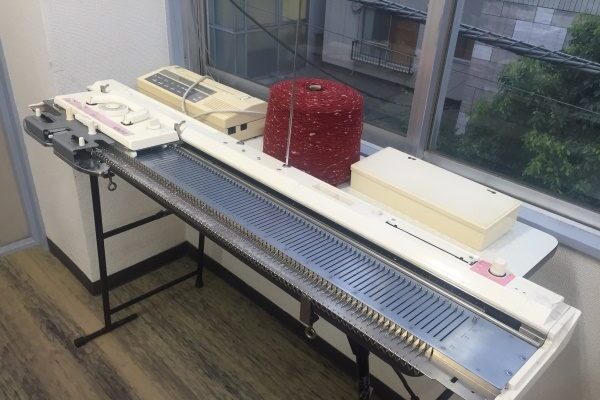
This time, I would like to write about knitting machines. Introducing three types of knitting machines: home machines, hand-crank machines, and automatic machines.
Table of Contents
Even when you say “knitting machine,” there are many kinds. Circular knitting, flat knitting, warp knitting… Knitting is really deep. (Warp knitting is not knitted from a single thread, so it may be a special category.) Today, let’s talk about the familiar plain stitch sweater. Introducing a flat knitting machine that can knit!
Weft knitting uses a carriage (a device for supplying yarn to needles). It is a method of knitting a fabric by moving left and right…It sounds very difficult to explain in words, so I would like to learn about the knitting machine!
Home-use machines (household hand-knitting machines) are not originally intended for industrial use, but you can create unique and highly original knitted fabrics with them. Since they are designed for home use, you can easily knit by attaching them to your desk. Here’s what they look like!

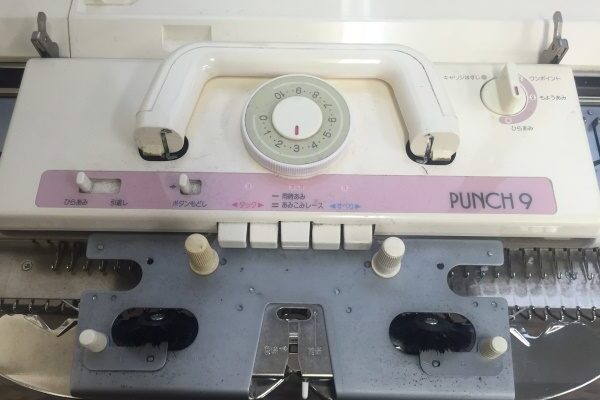
The image below shows the carriage of a home-use machine. Hold it in your hand and move it left and right to use it. Turn the round dial in the middle to adjust the stitch count. It is a task that requires physical strength, aside from moving the carriage!
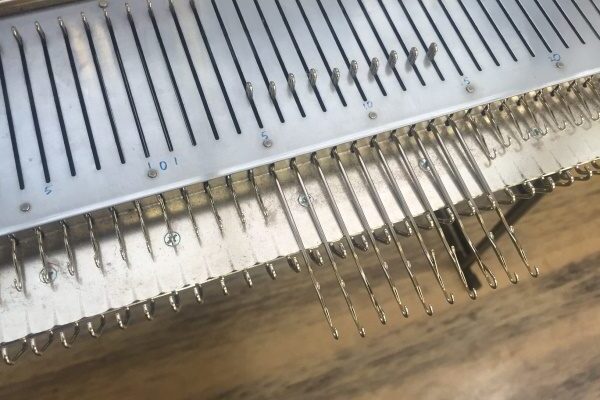
The stitches look like this. Since it only moves in one direction, there are some limitations on the patterns, but you can still do basic jersey stitch, ribs, tucks, lace, intarsia, and moldings.
Next is the hand-knitting machine.
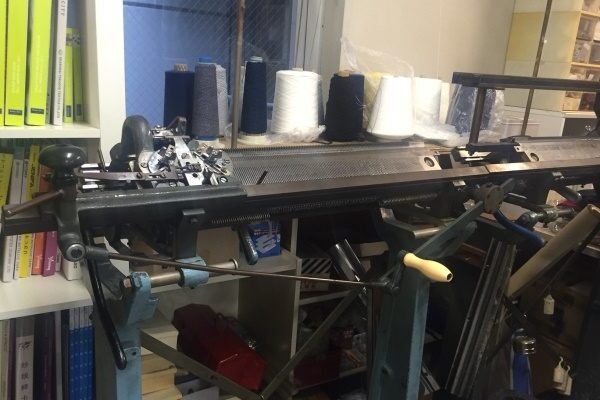
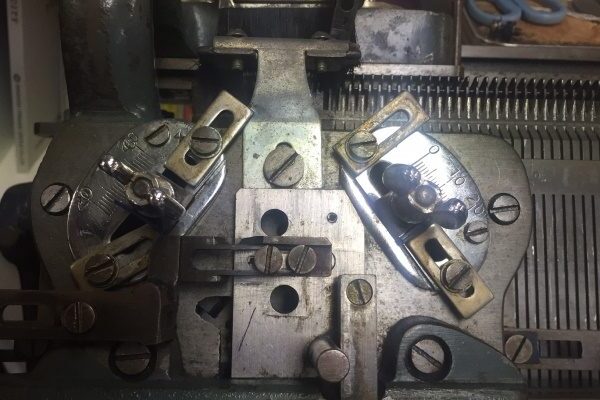
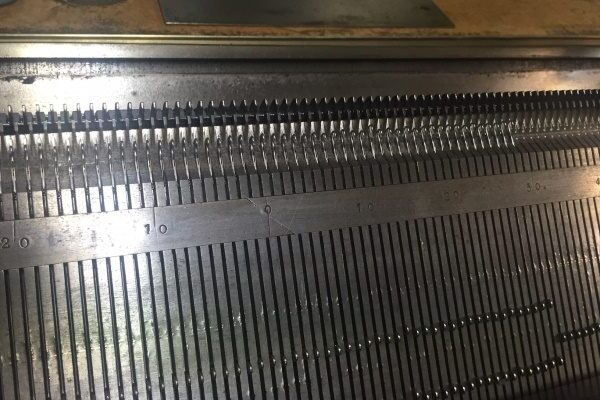
Currently, an automated machine (computer-controlled knitting machine), which will be introduced later, is the mainstay of knit production (industrial use). However, in overseas production, hand-knitting machines are still actively used. Compared to household machines, the needles on these machines are arranged in an inverted V shape (called a “bed”). This widens the range of knitted fabrics that can be produced.
For example, Milan Rib, which you often see in the market, cannot be knitted on a home machine, but you can knit it on a hand-knitting machine! It’s easy to think that all industrial machines are fully automatic, but hand-knitting machines require manual work, such as increasing/decreasing stitches, creating patterns, and selecting colors. When a professional uses a hand-knitting machine, you will be amazed at their incredible speed!
The last item I would like to introduce is the automated machine (computer-controlled knitting machine)! It is widely used both in Japan and overseas. SHIMA SEIKI and STOLL are well-known companies in this field. Knitting machines made by Japanese companies are used all over the world, and I am always very proud of that.
The non-sewn knit WHOLE GARMENT is a technology developed by SHIMA SEIKI. There are also knitting machines specifically for WHOLE GARMENT. Here’s what this automatic machine looks like.


The carriage of the automatic machine looks like this. Do you see the many threaded carriers lined up?


The appearance of the needle part is similar to that of the hand-knitting machine. However, during knitting, nothing is done manually by the operator. You import programming data into the built-in controller, and then make fine adjustments, such as stitch count and speed, on the operation panel (pictured below). The machine does the knitting automatically! Since the automatic machine knits very quickly, it’s crucial to adjust the thread tension properly.
By the way, the operation panel of the knitting machine I used had physical buttons, but the latest knitting machines seem to have touch panels! I definitely want to try one! Programming this data and fine-tuning the knitting process is a skilled craft. You need experience, intuition, and knowledge to master it!
When I was a student, I tried to knit a double jacquard with an automatic machine, but I kept experiencing thread breakage. I remember spending a lot of time watching and wishing for success. Eventually, I managed to complete it because the teacher made the fine adjustments!
Subscribe Now
To receive the latest updates and insights, subscribe to our newsletter.
Contact Us
For further inquiries regarding this article, please feel free to contact us.